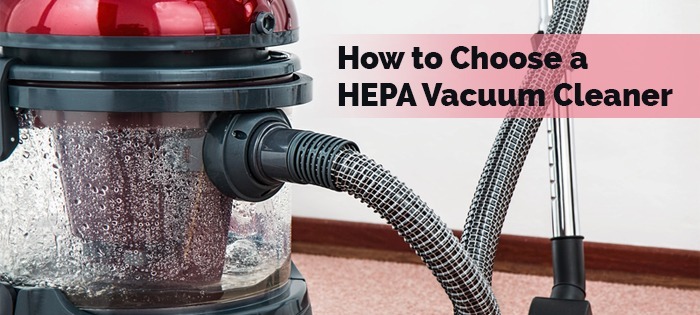Have you ever wondered your family members tend to sneeze a lot, even if you already cleaned the house? You sweep and mop and scrub and vacuum a lot, but still your family members with allergies and asthma doesn’t seem to (involuntarily) react that you did a great job.
For households with allergic or asthmatic members, HEPA vacuum cleaners can help you ensure that your home will be allergen-free. HEPA stands for high efficiency particulate air or high efficiency particle arrestance. These are filters that remove 99.97% of all particles with a diameter of 0.3 microns or more, preventing allergens and particulate triggers from being returned back to the air through the vacuum’s exhaust. A quality HEPA vacuum cleaner does not only control dirt, dust mites, pollen, pet dander and other irritants, but also improves air quality around your home and make it more breathable. Many HEPA vacuums are available in the form of canister vacuums or upright vacuums.
Most airborne particles are about 2.4 microns, and the most harmful-sized particulates are around 0.3 microns. However, the average non-HEPA vacuum cleaner only sucks up particles ranging from 30 to 50 microns in size, blowing the rest of allergens in the air. HEPA vacuum cleaners make the environment clean for an allergy or asthma sufferer. But be careful – not all HEPA vacuums that you can find perform well. Some manufacturers label their products as HEPA vacuums, as they are not required by law to test their products yet. There are also no consumer protection laws regarding what can be legally labeled as HEPA vacuums.
Here’s what you need find in an effective HEPA vacuum cleaner once you’re in a hardware store or appliance shop looking for one:
1. Check if the system is sealed
A HEPA filter is only effective if the body of the vacuum is sealed. If air is leaking around the body, the filters or the dust bag of the vacuum cleaner, then the HEPA filter cannot assure that the air released by the machine is really free of allergens. Look for gaskets or rubber seals around your vacuum cleaner – it must be found especially around the lid and filter.
2. Opt for a bagged vacuum cleaner
When it’s time for clearing up the debris from the vacuum, it’s best if they are collected in a sealable bag. Disposing of the dust and dirt directly from the canister only brings back the particles and the allergens to the air. Some vacuum cleaners come with filterbags, in addition to their filters. These filterbags have layers that also does the filtration, assuring you that the vacuum cleaner will effectively trap most of the allergens in your home. Some vacuum dustbags feature a spring loaded mechanism to automatically seal themselves upon removal.
If you’re going to use a bagless vacuum and you’re an allergy sufferer, it’s best to have someone else empty the dust bin for you, and have it disposed outdoors.
3. See if the filter is after the motor
If the vacuum label claims that it’s a HEPA vacuum cleaner, the filter should be the last thing that air goes through before it exits the vacuum to ensure that the exhaust is emitting safe, allergen-free air.
4. Ask for testing with a laser particle counter
Ask the store clerk to demonstrate that the vacuums are truly HEPA using a laser particle counter. While the vacuum is running, the particle counter (which should be set to detect 0.3 micron particles) must be held up to the exhaust. It should read nearly zero. This is the only way you can be sure that a vacuum is really HEPA.
Once you’ve determined that a vacuum is a legitimate HEPA vacuum, here ae some other important features you need to check before you purchase:
1. Ease of use
Before you go out and choose a central vacuum system, take an accurate square footage of your home first. The size of your house will determine how much air watts should the unit have to be compatible and powerful enough for your home. A house less than 2,500 square feet needs four hose inlet ports, but if it’s larger, more ports are needed to ensure all areas are accessible by the hose. Be sure to ask your central vac dealer about the air watts of the vacuum they offer and how many square feet can it cover.
2. Air flow or suction power
The suction power of the vacuum cleaner is determined by airflow, which is rated as CFM (cubic feet per minute). Better vacuum cleaners have higher CFM, and are generally more expensive. In the case of Dyson brand, the suction power is measured by airwatts. Vacuums with two-fan motor are also more powerful than those with a single fan motor.
3. Reach
Make sure that the cord length is long enough for your needs. Also, take into consideration the hard-to-reach areas in your home and make sure that the vacuum cleaner you find can reach them. If you’re looking for an upright vacuum, take the hose into account. Can it twist? Also check the telescopic wand if it’s adjustable so it can reach higher places.
4. Attachments and options
Tools that can be attached to your vacuum are essential for your choice. List the areas you need a vacuum cleaner for (like hardwood floors, carpets, upholstery, ceiling fan, etc.) and ask if the model you choose has brushes or nozzles suitable for cleaning those. Also see how easily they can be changed.
5. Brand
The manufacturer of the vacuum cleaner also deserves consideration. If the brand has a reputation of being durable, effective and powerful, you can consider it as a plus point. Research about vacuum brands on Amazon or on review sites and check the customer reviews.
6. Warranty
Check the warranty period of your vacuum cleaner. Generally, a good vacuum cleaner gives a 5-year warranty on the motor and one year on other parts.
